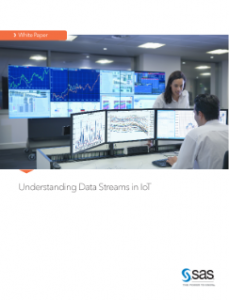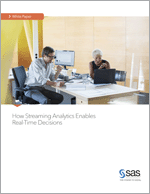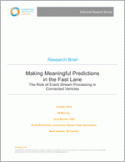The Data Roundtable
A community of data management experts
Jim Harris says event stream processing determines if big data is eventful and relevant enough to process and store.

Determining the life cycle of event stream data requires us to first understand our business and how fast it changes. If event data is analyzed, it makes sense that the results of that analysis would feed another process. For example, a customer relationship management (CRM) system or campaign management system like

As consumers, the quality of our day is all too often governed by the outcome of computed events. My recent online shopping experience was a great example of how computed events can transpire to make (or break) a relaxing event. We had ordered grocery delivery with a new service provider. Our existing provider

I believe most people become overwhelmed when considering the data that can be created during event processing. Number one, it is A LOT of data – and number two, the data needs real-time analysis. For the past few years, most of us have been analyzing data after we collected it,

In my last two posts, I introduced some opportunities that arise from integrating event stream processing (ESP) within the nodes of a distributed network. We considered one type of deployment that includes the emergent Internet of Things (IoT) model in which there are numerous end nodes that monitor a set of sensors,

In my previous post, I discussed the similarities, differences and overlap between event stream processing (ESP) and real-time processing (RTP). In this post, I want to highlight three things that need to get real. In other words, three things that should be enhanced with real-time capabilities, whether it’s ESP, RTP or



